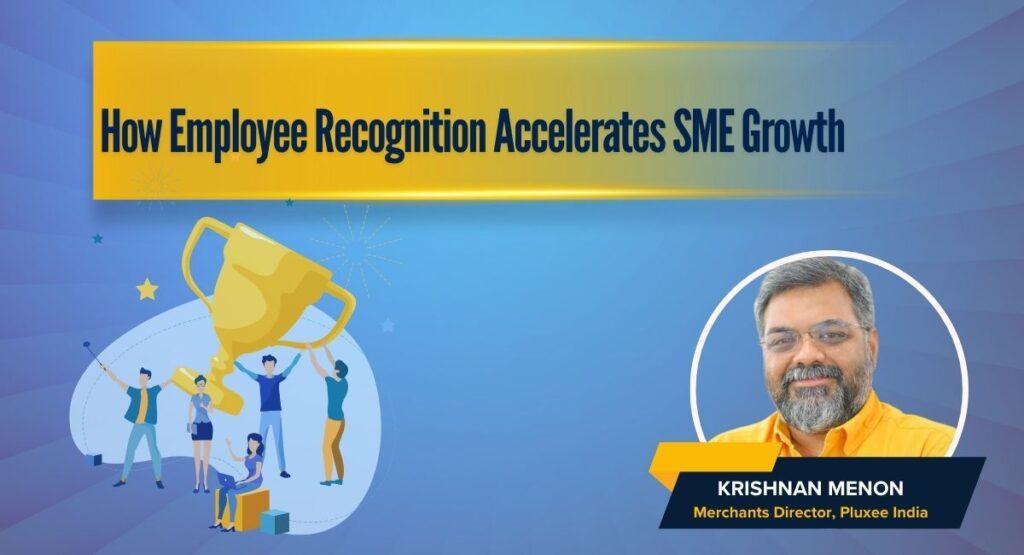Highlights:
- “Don’t just focus on rules—focus on building a culture where everyone feels safe, respected, and heard,” Aparna Gonate on PoSH and workplace safety.
- Aparna touches upon the various compexities surroduning formulation of PoSH policies as well as Internal Committee (IC)
- “The process should feel fair, kind and serious—not cold or scary” – about PoSH complaint-resolution process.
- Aparna insists on keeping an eye out for certain cultural red flags even without formal complaints for effective prevention of workplace harassment.
The Sexual Harassment of Women at Workplace (Prevention, Prohibition and Redressal) Act, 2013, more commonly known as the PoSH Act, aims to safeguard employees from harassment at the workplace, directing employees to provide a safer environment that ensures dignity and equality.
However, creating effective PoSH policies for a workplace is far from an easy task. The complaint and safeguarding system requires an empathetic and fair approach that protects the rights of all the involved parties.
With over twenty years of experience in the field of HR, Aparna Gonate is a huge advocate of PoSH Training and DEI initiatives. Active as a POSH, DEI, POCSO and EAP Strategist for over two years, Aparna is well-versed in the implementation of PoSH policies across companies and their impact.
In her conversation with ThePeoplesBoard Team, Aparna discusses the complexities surrounding PoSH, how a company can implement a fair PoSH policy, and the major dos and don’ts surrounding workplace conduct.
TPB Team: Could you briefly walk us through your career in Human Resources, highlighting your role and contributions in driving PoSH-related initiatives and ensuring compliance within organisations?
Aparna Gonate (AG): I began my HR journey in Human Resources with AON Hewitt (formerly Hewitt Associates), a renowned HR consulting organisation. I initially worked in their BPO vertical and later transitioned to the Technology Development Center (TDC), where I was fortunate to be trained in the gold standards of HR best practices advocated by their consulting arm.
Armed with this foundation, I moved into the dynamic world of technology startups. These roles gave me the platform to implement what I had learned from recruitment strategies and policy formulation, to building scalable HR processes and fostering a culture of productivity and innovation. Collaborating closely with CXOs, I gained hands-on experience in organisational scaling, business partnering, and even insights into venture capital and funding landscapes.
As I progressed, I became deeply committed to creating safe, inclusive, and equitable work environments. This led me to specialise in PoSH (Prevention of Sexual Harassment) compliance. I’ve since consulted for multiple organisations and educational institutions, conducting Internal Committee (IC) trainings, helping draft robust anti-sexual harassment policies, and guiding organisations through inquiry procedures. My mission has been to not just ensure compliance with the PoSH Act, 2013, but to build a culture of dignity, trust, and respect—where every employee feels safe, heard, and empowered.
TPB Team: For context, could you explain the primary purpose of the PoSH Act, its core provisions, and the broader significance it holds in fostering safe and inclusive workplaces?
AG: The primary purpose of the PoSH Act, 2013 (The Sexual Harassment of Women at Workplace [Prevention, Prohibition and Redressal] Act) is to provide a legal framework to prevent and address sexual harassment of women in the workplace. It was enacted in response to the landmark Vishaka Guidelines laid down by the Supreme Court of India, recognising sexual harassment as a violation of fundamental rights.
At its core, the Act mandates that every organisation with 10 or more employees must constitute an Internal Committee (IC) to address complaints of sexual harassment. It lays out clear definitions of what constitutes sexual harassment and provides a structured redressal mechanism for complainants. The Act also emphasises preventive measures, including awareness training, policy communication, and periodic reporting to ensure compliance.
Beyond its legal mandates, the PoSH Act is a powerful tool for cultural transformation. It encourages organisations to build workplaces rooted in dignity, equality, and respect. Its broader significance lies in its ability to shift mindsets—from reactive compliance to proactive inclusivity. By embedding safety and respect into the workplace fabric, the Act not only protects individuals but also enhances organisational productivity, trust, and employee well-being.
TPB Team: In your view, what are the essential elements that leaders must prioritise when formulating a PoSH policy that is both legally sound and culturally impactful within the organisation?
AG: To create a PoSH policy that’s both legally sound and culturally strong, leaders should focus on a few key things:
- Legal clarity – Make sure the policy follows the PoSH Act properly, with clear definitions, steps to complain, and roles of the IC (Internal Comittee).
- Inclusive language – Use terms that include all genders and situations, not just women or male-female cases.
- Leadership support – Leaders must walk the talk, promote zero tolerance, and back the IC with proper resources.
- Regular trainings – Not just once a year. Do engaging, real talk sessions where employees actually understand what counts as harassment.
- Confidentiality & protection – Keep things private, and protect people from backlash or retaliation if they report.
- Feedback & updates – Review the policy often, listen to employee feedback, and tweak things that don’t work.
- Cultural fit – Don’t just copy-paste from another company. Adapt it to your team’s language, mindset and daily realities.
Basically, don’t treat PoSH like a legal tickbox—make it part of your culture.
TPB Team: How can the leadership make sure PoSH policies aren’t just sitting on paper, but are actually followed across all teams and locations?
AG: Leaders can make sure PoSH policies aren’t just on paper by doing a few solid things:
- Lead by example – If senior folks act respectfully and speak up against bad behaviour, others will follow.
- Regular training – Not boring lectures, but real, practical sessions with stories and open talks. Do it often, not just once.
- IC visibility – Make sure people know who’s on the Internal Committee and how to reach them, even in remote offices.
- Anonymous feedback – Use surveys or suggestion boxes to check how safe people really feel.
- Follow up on cases – Show that complaints are taken seriously and action is actually taken—no covering up.
- Reward good culture – Appreciate teams and managers who create respectful spaces. Make it part of performance reviews maybe.
- Check-ins across locations – Don’t ignore smaller branches or remote teams. Do audits or visits to see what’s really happening on ground.
So, it’s not just about having a PoSH policy—it’s about living it, everywhere.
TPB Team: What key qualities should leaders look for when selecting members of the Internal Committee (IC) to ensure fairness, competence, and trust?
AG: When picking IC members, leaders should look for these key qualities:
- Integrity – Someone who’s honest and won’t take sides. Trust matters a lot here.
- Empathy – They should be able to listen without judging and handle sensitive stuff with care.
- Legal awareness – At least basic knowledge of the PoSH Act or willingness to learn it properly.
- Confidentiality – Must know how to keep things private, no gossiping or leaks.
- Good communication – They should ask the right questions, stay calm, and talk clearly with both parties.
- Bias-free mindset – No strong prejudices or opinions about gender, caste, background, etc.
- Availability & commitment – They must be willing to invest time, attend trainings, and be present when needed.
The IC needs to be strong, fair and trusted—like a backbone of your PoSH system.
TPB Team: What does a fair and empathetic complaint-resolution process under the PoSH framework really look like?
A fair and empathetic PoSH complaint process looks like this:
- Safe reporting – The person complaining should feel heard, not scared. They should know they won’t face backlash.
- Quick response – The IC should act fast, not sit on the complaint for weeks.
- Listening to both sides – Hear both the complainant and the respondent fully, without bias or judgment.
- Private & respectful – Keep the whole process confidential. No gossip or public shaming.
- Support available – Offer emotional support or counselling if the person needs it.
- Clear communication – Tell people what’s happening at each step. No confusion or radio silence.
- Action based on facts – Decisions should be based on what actually happened, not office politics or who’s senior.
In short, the process should feel fair, kind and serious—not cold or scary.
TPB Team: Have you come across any innovative formats, such as role plays, case simulations, or digital tools, that have significantly enhanced engagement during PoSH training sessions?
- Nukkad Natak (street play) – Super impactful! A powerful short drama is performed in common areas like the cafeteria or the lobby. Catches attention and hits home emotionally.
- Digital quizzes & games – Tools like Kahoot or Slido make things fun and competitive while sneaking in key learnings.
- Interactive videos – Viewers click through different choices to see how actions lead to different outcomes. Great for showing impact.
- Story circles – Safe spaces where people (only if they’re comfy) share workplace stories. Builds empathy like nothing else.
- Group case solving – Small teams handle a scenario and present how they’d deal with it like an IC. Gets people thinking.
- AI chat bots/sims – Let folks practice convos with a virtual complainant or manager. Super useful for HR and IC members.
- Case simulations – Use real (anonymised) or fictional stories and ask: What went wrong? What should’ve happened?
- Role plays – Let teams act out workplace scenarios. Really helps drive the message home by experiencing it firsthand.
This flow brings in the high-energy formats first, and ends with deeper, participative ones like role plays and case studies.
I specialise in simplifying complex topics into easy-to-understand concepts—without using legal or technical jargon—and delivering impactful training sessions through innovative and engaging formats. That’s a great strength, especially when working on sensitive and legal topics like PoSH.
TPB Team: How can HR teams effectively tailor PoSH training content to address the unique needs and responsibilities of different employee groups, from frontline staff to senior leadership?
AG: HR teams can tailor PoSH training for different groups by:
- Understanding roles & risks — Customise content based on what each group faces daily. Frontline staff may need examples about customer interactions, while leaders focus on creating a safe culture and handling complaints.
- Using relevant language — Keep it simple and practical for frontline workers; use strategic and policy-level talk for managers and seniors.
- Different formats — Short, interactive sessions or videos for busy teams; deeper workshops or discussions for leaders.
- Clear responsibilities — Highlight what each group must do—like frontline staff knowing how to report, and leaders knowing how to respond and support.
- Real-life scenarios — Use examples specific to each group’s workplace reality.
- Frequent refreshers — Regular bite-sized updates tailored for different teams keep awareness alive.
- Feedback loop — Collect feedback from each group to improve and make training more relevant over time.
TPB Team: What are some cultural red flags that HR leaders should watch out for in organisations, even if there are no formal complaints?
AG: HR leaders should watch out for these cultural red flags, even when no formal complaints exist:
- High employee turnover – Especially from certain groups, it can mean people are leaving because of a bad or unsafe culture.
- Silence or fear around speaking up – If employees avoid talking about harassment or uncomfortable situations, that’s a big warning.
- Gossip and rumours – Lots of behind-the-back talk can hide bigger issues.
- Exclusion or cliques – Groups that shut out others based on gender, caste, or other differences show cultural problems.
- Unclear boundaries – When jokes, comments, or behaviours cross lines but no one calls it out, it creates a toxic environment.
- Lack of diversity in leadership – If leaders are mostly one type of person, it can mean bias and a lack of inclusion.
- Poor response to small issues – Ignoring minor complaints or discomfort can build into bigger problems.
TPB Team: What’s one piece of advice you’d give to a new HR leader about PoSH and workplace safety?
AG: My one piece of advice for a new HR leader on PoSH and workplace safety is: Don’t just focus on rules—focus on building a culture where everyone feels safe, respected, and heard.
If people trust that HR truly cares and will act fairly, they’re more likely to speak up early and help stop problems before they get serious. Rules alone won’t fix things; culture does.





